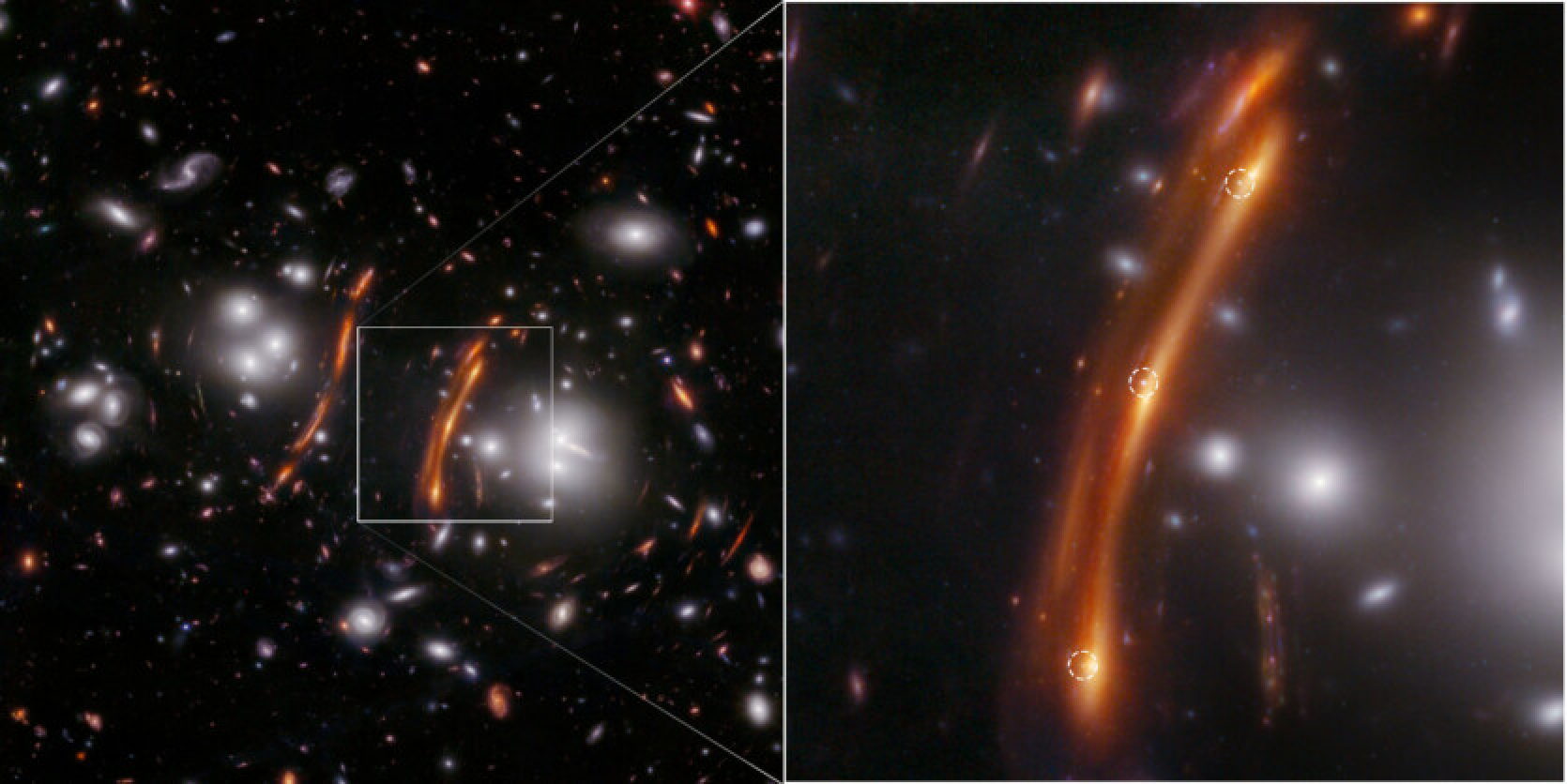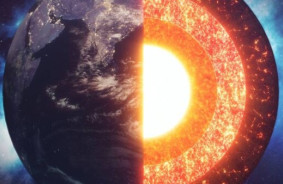The near-infrared camera (NIRCam) of the James Webb Space Telescope has captured an intriguing sight 3.6 billion light-years from Earth— a supernova that appears three times at different stages during its explosion in a single image. Importantly, this image could assist scientists in gaining a better understanding of how rapidly the Universe is expanding.
A team of researchers chose to observe the galaxy cluster PLCK G165.7+67.0, also known as G165. They were particularly interested in the high rate of star formation, which leads to an increased number of supernovae. The image presented above shows what resembles a band of light with three distinct points that appear brighter than the others. As explained by Dr. Brenda Fry from the University of Arizona, these points correspond to a white dwarf star undergoing an explosion. The image also features gravitational lensing—meaning there is a cluster of galaxies between us and the star, which acted as a lens, bending the light of the supernova into multiple images. Fry compared this effect to a triple mirror that reflects a different image of a person sitting in front of it. Notably, this is the most distant Type Ia supernova, which occurs in a binary system, that has been observed to date.
Due to the galaxy cluster in front of the supernova, the light from the explosion followed three different paths, each of varying lengths. This allows the Webb telescope to capture different stages of the explosion in one image: at the beginning, mid-way, and at the end. The triple images of the supernova are particularly significant, said Fry, because "the time delays, distance to the supernova, and properties of gravitational lensing provide a measure of the Hubble constant or H0 (pronounced H-naught).”
NASA describes the Hubble constant as a number that characterizes the current rate of expansion of the Universe, which in turn can give us more insights into its age and history. Scientists have not yet agreed on its exact value, and the team hopes that this supernova image might provide some clarity.
“The supernova has been named SN H0pe because it gives astronomers hope for a better understanding of the changing rate of expansion of the Universe,” Fry stated.
In 2001, Wendy Friedman from the University of Chicago led a team that determined the Hubble constant value to be 72. Other teams have established the Hubble constant to range from 69.8 to 74 km/s per megaparsec. Meanwhile, Fry's team reported a value of 75.4, with a margin of error of plus 8.1 or minus 5.5.
“Our team's results are striking: the Hubble constant value aligns with other measurements in the local Universe and somewhat contradicts values obtained when the Universe was younger,” said Fry.
However, further investigation of the supernova and its derived Hubble constant value is necessary, and the team anticipates that future observations will “reduce uncertainties” for more precise calculations.
Source: Engadget













Comments (0)
There are no comments for now